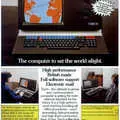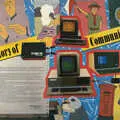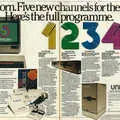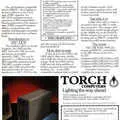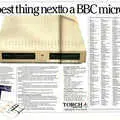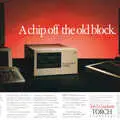
Torch Advert - April 1985
From Personal Computer World
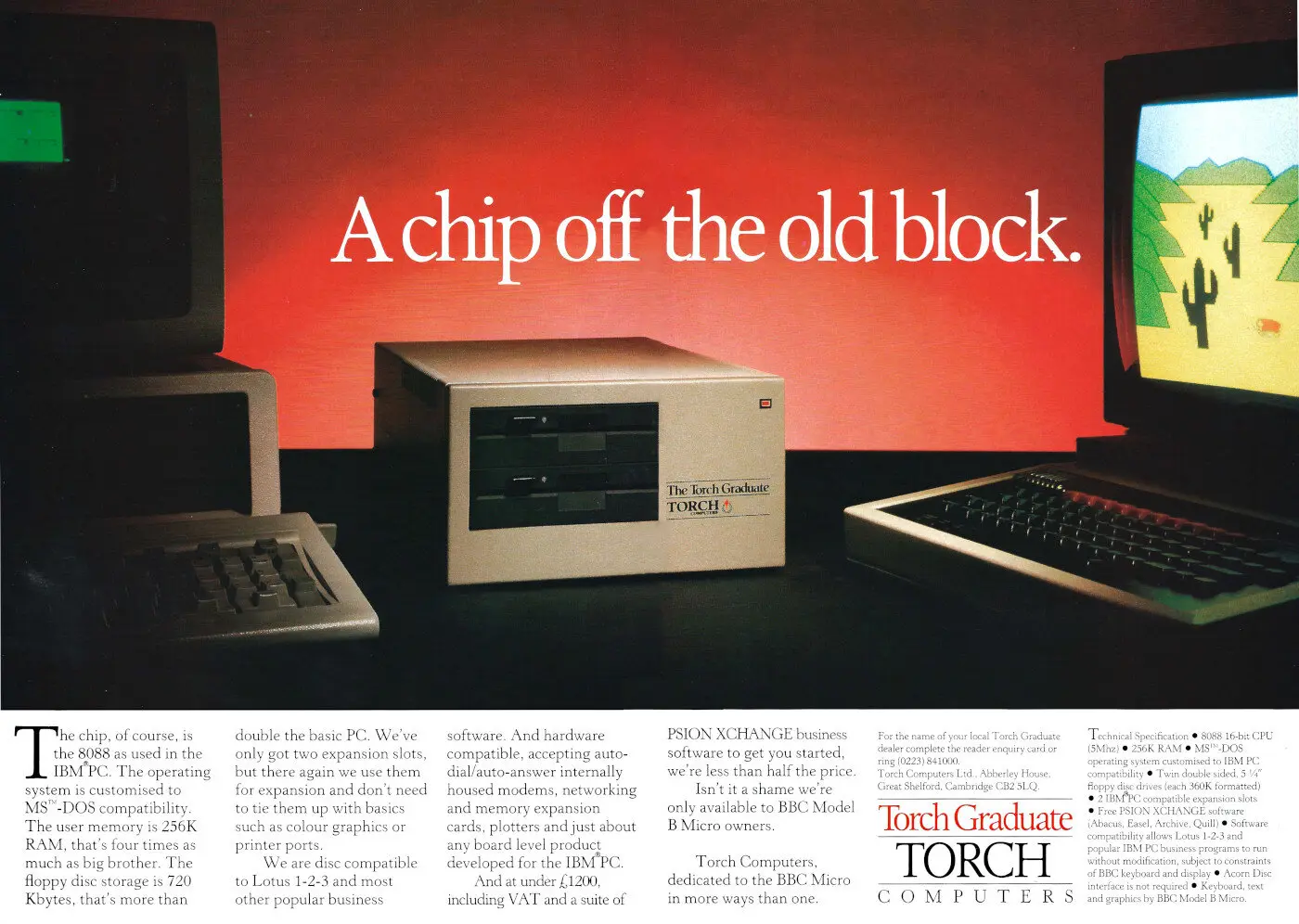
A chip off the old block
Torch's Graduate was an unusual hybrid, being part sort-of IBM PC, with an Intel 8088 CPU and a pair of 720K 5¼" floppy disk drives, but no input or display of its own, as this was handled by the Acorn BBC micro that needed to be attached to it.
As a result, it was nominally cheaper than a real IBM PC, but wasn't 100% compatible, and so only certain MS-DOS programs would run on it, although that did include Lotus 1-2-3, the PC spreadsheet and database package that had destroyed the pioneer VisiCalc.
Unfortunately, the interface between the Graduate and the BBC micro hosting it was over the 1MHz bus, and not the much faster Tube interface. This was said to have been so slow as to effectively handicap the whole system[1].
By 1986, Torch had moved away from its "vertical markets and direct sales" into the nascent Unix market - where it was already claiming to have shipped more Unix systems by volume than any other company in the UK[2] - when it launched its Triple X microcomputer.
In a way, this was not dissimilar in concept to Torch's original Communicator - a machine that was built around connectivity - as the Triple X came with a built-in telephone and modem, X.25 packet-switching connectivity and Ethernet - the network standard that was still in the process of becoming the de-facto standard for local area networks.
Personal Computer World wrote of the move in its benchtest of the Triple X in January 1986's edition that:
"Torch has now moved away from its BBC days. Its latest machine features a powerful Motorola 68010 procesor, 1MB RAM and a 20MB hard disk, all for £3995. More importantly, it comes with a user-friendly version of Unix complete with colour graphics, windows, icons, mice and pull-down menus. Now that could be a machine worth getting excited about."
The hardware had all been designed specifically for running Unix - the multi-user, multi-tasking operating system that for several years was supposedly the "next big thing" in the world of high-end micros.
The problems with Unix were many, the largest of which was that it had been written primarily as a platform for programmers to write software and to do nerd stuff on, and so was famously unfriendly. It was also highly fragmented, with several major forks around, although there were some attempts to standardise on AT&T's System V.
To this end, Torch was also providing its own front end, in the shape of Opentop - an entire windowing system, which ended up making the Torch look much like an Apple Macintosh, although in colour.
Clearly not a fan of the underlying operating system on the Triple X, Peter Bright concluded in his review that:
"I must admit that I've never been a great fan of Unix - it has too many commercial shortcomings for my taste, but I was extremely impressed with what Torch has managed to do with such an intrinsically bad operating system. As far as the Opentop user-friendly interface is concerned, I was impressed with how little Unix intruded on the proceedings. In general, Opentop is fast a simple to use. If you are in to Unix, or if you want a communications/network system which can be used by non-technical staff, I would suggest that you give the Triple X a long, hard look"[3].
Torch had been set up as a joint venture between Climar Group and Acorn Computer, with former Sinclair employee and Acorn operating system developer Ray Anderson as co-founder and Acorn's Chris Curry and Hermann Hauser on the board.
It was then nearly bought by industrial congolmorate GEC, and was for a while owned outright by Acorn, becoming part of its Custom Systems Division.
However, in 1987, Acorn closed that part of its business down in order to improve its finances, so Torch was out on its own again[4], but by 1990 the company - which Personal Computer World filed under the "Great British triers department" - had folded.
It wasn't entirely over, as the part that had been working on Unix - in particular X-Desktop products - re-appeared in the late summer of 1990 as Unipalm Xtech, with the release of a System V Release 4 X11 server and a version of the Motif windowing system development toolkit for Sun workstations[5].
Date created: 15 May 2024
Last updated: 12 March 2025
Hint: use left and right cursor keys to navigate between adverts.
Sources
Text and otherwise-uncredited photos © nosher.net 2025. Dollar/GBP conversions, where used, assume $1.50 to £1. "Now" prices are calculated dynamically using average RPI per year.
